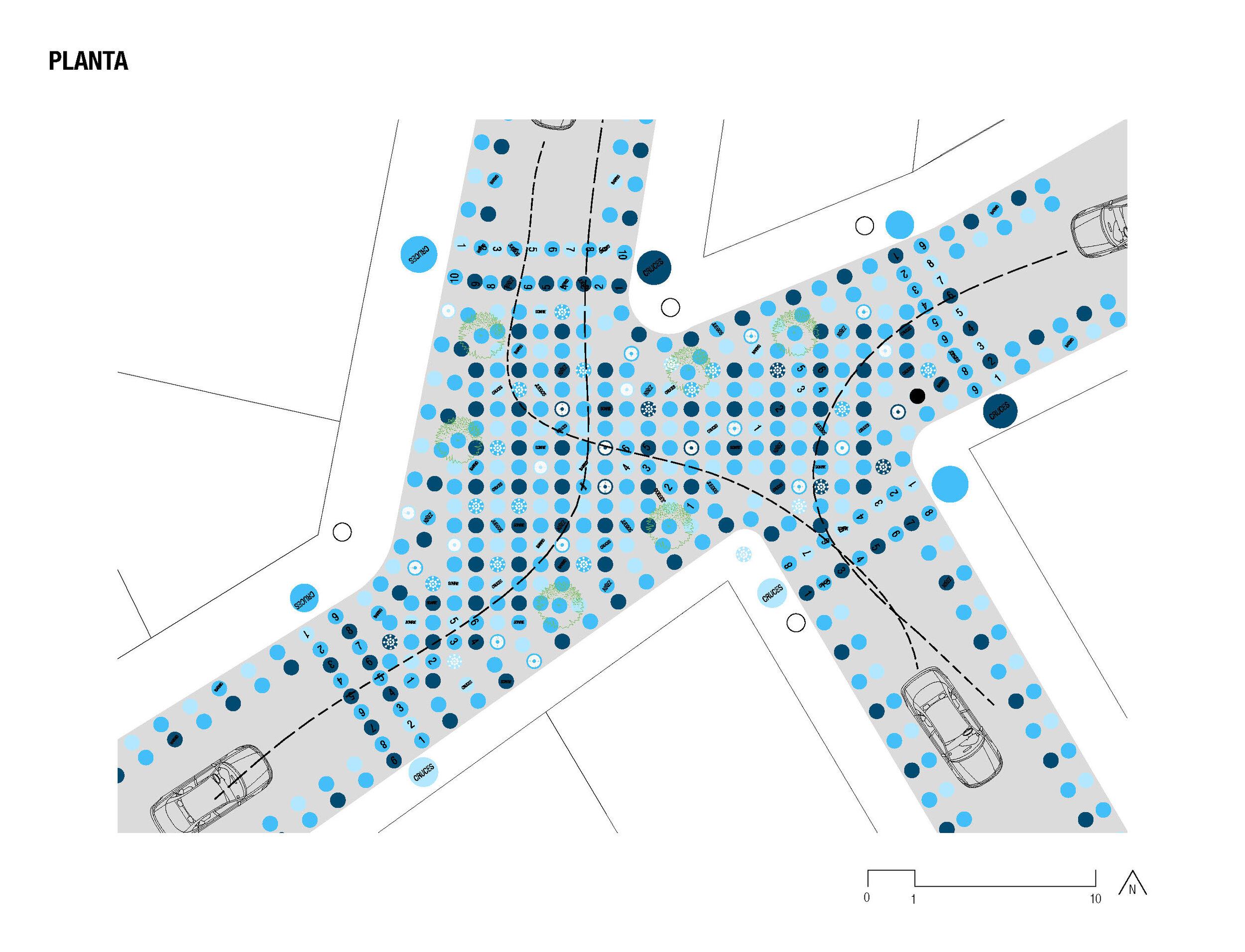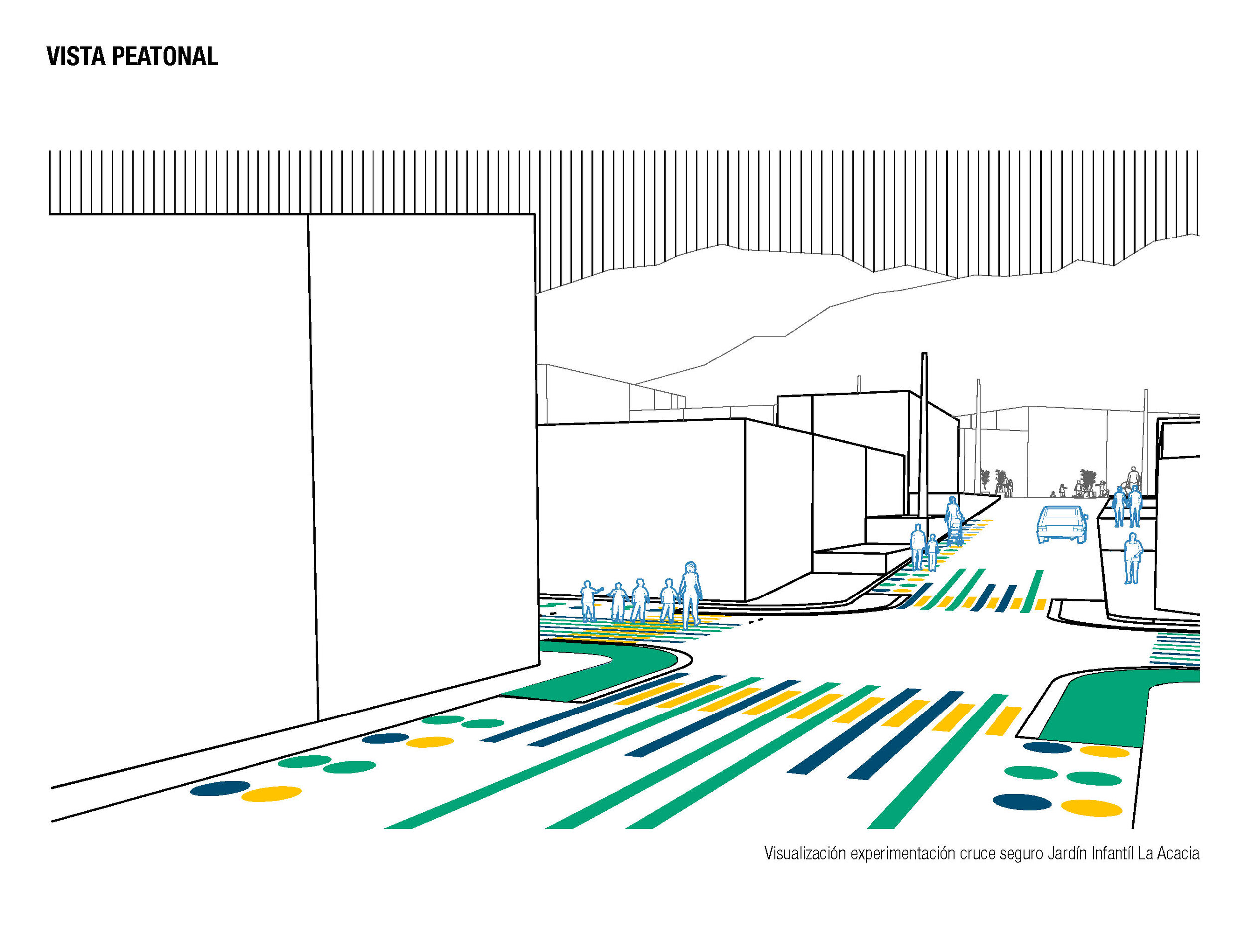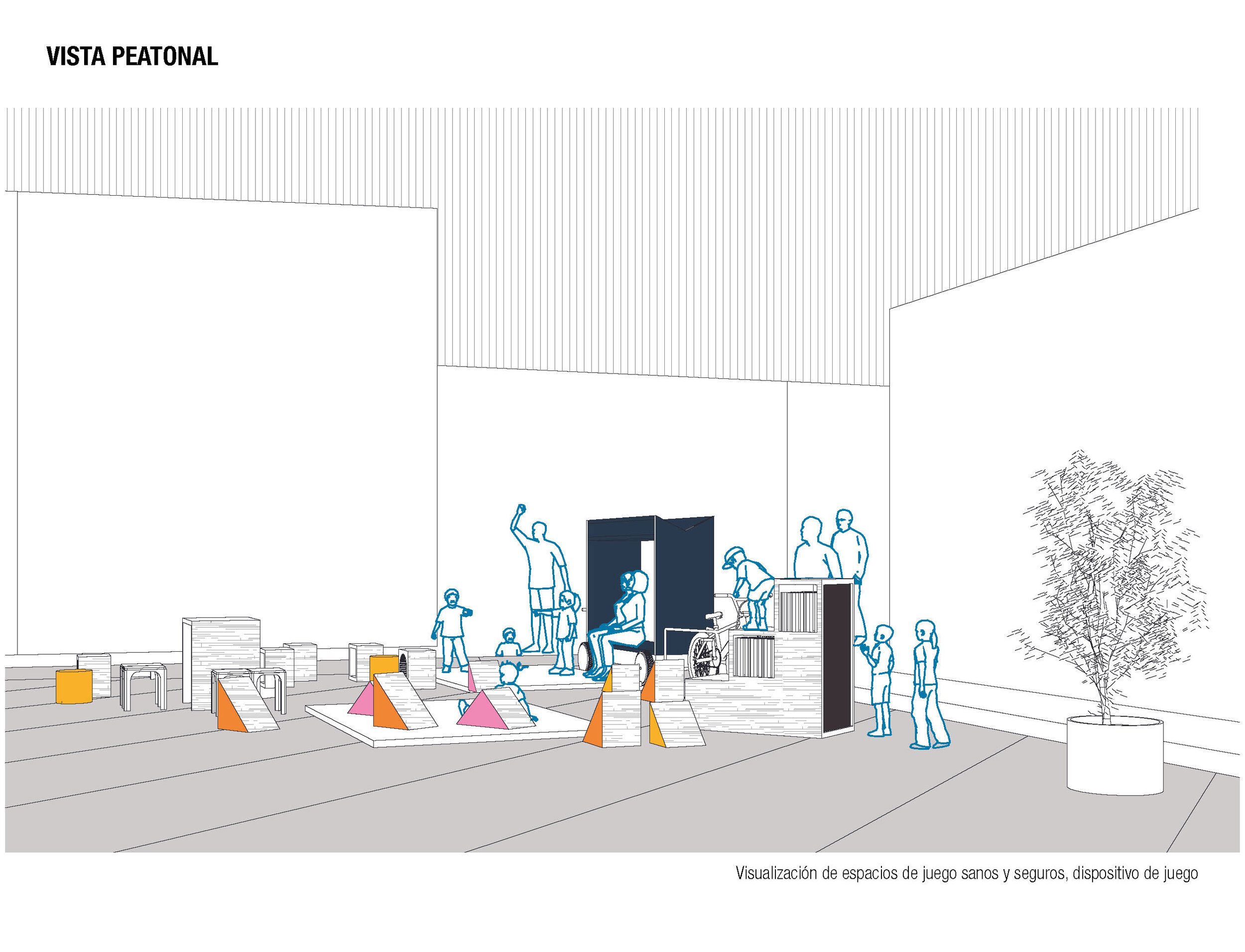Urban95
Urban95 seeks to answer this question by helping city planners, urban designers, and other urbanists understand how their work can influence child development. Also help them identify and scale cost-effective ways to improve the way families with small children live, play, interact and move through cities. Each city’s implementation journey is unique, yet one core goal is universal: a positive impact on caregiver behaviours and well-being at scale.
A good start in life for the youngest urban residents is one of the best investments a city can make, because cities for babies, toddlers and caregivers are good for everyone.
Role:
User research, Service Design, Visual Design
Client:
Bernard van Leer Foundation & Bogotá Municipality
Team:
Casa de la Infancia Foundation
Date & Place:
June 2017 - Dec 2019. Colombia
Project Overview
Context
Bogotá is a city that, like many of the world’s great capitals, is in a process of urban and social transformation. Overpopulation is a problem that does not stop growing and that generates serious effects on health, nutrition, education, recreation, security and unemployment. This problem also prevents the generation of healthy, safe and friendly environments, the conditions required to guarantee children and families the promotion of their development and a better quality of life.
In this context, Urban95 Bogotá “Crezco con mi Barrio” emerged in 2017 as an initiative of the Bernard van Leer Foundation, led by the Mayor of Bogotá and with the technical support of Bloomberg Associates and the Casa de la Infancia Foundation. It is implemented in the La Acacia neighborhood in the locality of Ciudad Bolivar with the aim of generating a pilot of planning and public management for early childhood in articulation with urban planners, architects, engineers and decision-makers from the early childhood approach of the city.
Challenge
Bogotá Urban95 aims through a methodology of community engagement and urban design to: Generate healthy, safe and friendly spaces for the development of early childhood and thus encourage early quality learning and positive interactions between children and their caregivers.
My role:
My role in the initiative was as Service Designer & Researcher. I was leading and guiding the Casa de la Infancia Foundation team on how to use Human-Centred Design framework for collaboratively design the experimentations and interventions. I designed and facilitate the workshops, planned and conducted researcher, analyze the data and communicated the insights, and conceptualized and crafted the proposal with the team. I also was in charge of building the relationship and enhancing collaboration with our partners and lead the design team.
Disclamer:
*The terms “children” are used throughout the case study, to refer to both the girl or girls and the boy or boys.
The Process
After a kick-off meeting with the Bernard van Leer Foundation, we decide to use an iterative methodology to define the design process for the pilot and early implementation of the Urban95 Bogotá “Crezco con mi barrio” pilot.
This included the planning, baseline survey, experiments and intervention phases in the public space with the respective measurements in context.
Discover
The polygon of intervention for the pilot was selected considering a series of prioritization criteria associated with the needs and opportunities present in the territory. Among these is its closeness to the bases of the Transmicable project, Early Childhood indicators, safety and public space indicators, as well as the presence of education and Early Childhood institutions.
Considering these criteria, an area of 250 meters was selected around a chosen point, as the focus of the intervention.
With the objectives mapped out, and all the questions defined, we planned the baseline gathering: surveys of families, focus groups, social cartography, and information gathering of the programs that existed in the locality.
Understand the context, people and territory
The baseline was gathered with the population and with information of the entities that have a presence in the selected intervention polygon: Ciudad Bolívar locality in a radius of 250 meters. We implemented several participatory methods to engage people from the community since the start of the iniciative. This includes defining the public space designs together, social mapping, doing walks around the neighborhood with mothers to identify unsafe areas and forming focus groups with different people.
Rather than big assemblies with discussions and decision-making, in this case people had the possibility to play, draw, and other activities that generated more connection with what was being done. These methodologies were attractive to children and their parents, and also fostered relationships in the neighborhood.
Field visits were a determining strategy to take action, talk to neighbors, and identify situations to improve public space.
Define
For Urban95 “Crezco con mi barrio”, the base of any intervention is in the recognition and action from community involvement. Hence, the baseline retrieves the population’s perceptions regarding problems and possible solutions of the place where they live. This information allows us to define the route in consequence of the established objectives.
The two main components of Urban95 ‘Crezco con mi barrio’ were defined: Citizen engagement and Urban design or urban development. We used them to frame our design decisions and start the second co-creation phase with the team and the community.
Making decisions about the initiative
After communicating the insights based on the baseline survey regarding the absence of public spaces for the interaction of children and caregivers and inadequate solid waste disposition were identified. We wonder about the places children and their caregivers walk and those they can walk on their own, the ones they play in and the ones they fear.
In order for us to start developing a design proposal, I framed few questions to invite stakeholders to engage in divergent thinking, generating more than one possible solution and to do not miss opportunities to explore and innovate.
Which streets give children the freedom to explore and play? How could we encourage positive interactions between children and caregivers in the public space? How can we connect the built spaces with those that don’t yet exist but will soon be there?
The underlying logic of this process is the understanding of public space as the area that is common to everyone. Therefore, its transformation can impact a range of stakeholders besides children.
Design
The vision was clear. But was it feasible and under what timeline? We needed to understand the limitations and scope of a minimum intervention in the public space that could be rolled out as a pilot within a short time.
The requests of the community, which are explained in the baseline, showed an evident interest in the physical changes of the public space. The people’s expectations regarding interventions that modify the spaces and make them “friendlier” were a fundamental part of the findings.
In this sense, three (3) types of physical interventions to be developed were defined: mobility (safe crossings, playful and safe routes), healthy and safe play spaces (game kit, playrooms and playing streets) and intervention of comprehensive improvement (landscaping, muralism, environmental open classroom, waste management and lighting improvement).
Making ideas tangible
Interventions in the public space include the implementation of trials and pilots, including new furniture and improvement of the neighborhood following the idea of ‘tactical urbanism’ which is based on experimental trials that can then be transformed into more permanent interventions in case they work for the community.
The goal was not to do isolated experiments but to connect, so experiments allow us to create networks that articulate the Early Childhood institutions and the attention needs directed to children under 5 years old.
Under these circumstances, we decided to experiment and measure the behavioral changes in the use of public spaces of the community when altering different places that were perceived as highly transited or high risk to transit or to stay and enjoy.
This process follows twelve steps needed to achieve a great public space, as well as twelve principles to support happy and healthy families in a friendly city that is open to play. It is aligned with the Sustainable Development Goals.
Designing for early childhood is recognizing that the child is the tip of the iceberg of a larger population group that surrounds him, from conception and upbringing to adulthood..
Design and execution of the experiments
Establishment of the technical board for the experiment design proposals.
External hiring of an architecture firm and industrial design agency.
Technical specifications for the design.
Citizen engagement for decision-making
Citizen engagement, happens in 3 moments (before, during and after) the experimentations
Data use, the data gathered are used to modify and restate the interventions for future actions.
Social service program
Records and measurement
Use of the from the Gehl Institute’s measurement instruments, Bloomberg Associates and the district’s mobility Secretary. These instruments were adapted to the components and interests of Urban95, including specific Early Childhood components, as well as qualitative analysis elements.




Deliver
At this stage, we were discussing and testing internally, to ensure the alignment of the process. By establishing a definite perimeter of intervention and bringing together services within that perimeter in order to generate better environments we start to have higher levels of connectivity.
The actions of both the community and the teams of the different entities began to add up to form a great bet which included transforming the available public spaces into a large playroom that promoted meaningful experiences and learning.
Under these circumstances, we decided to experiment and measure the behavioral changes in the use of public spaces of the community when altering different places that were perceived as highly transited or high risk to transit or to stay and enjoy.
Has been described as a ‘disruptive’ process since taking out children to the street is a revolutionary idea. This brings a different mindset, based on the idea that this leads to autonomy and freedom.
Lessons learn
Urban95 ‘Crezco con mi barrio’ has offered opportunities for improvement in the public space, leading to changes in mentality and relations that have increased the priority of Early Childhood Development. The actors involved highlighting the importance of measuring and evaluating how family integration is happening.
The child’s natural interaction, not only with the group of people around him, caregivers, family and even institutional entities, stresses the importance of managing all the scales of planning, corresponding to ecosystems in their different logics of interaction and interdependence home - equipment, equipment - neighborhood, neighborhood - locality, locality - city, city - country.
Recognize the main behavioral biases of caregivers, families and community to achieve the transformation of the environment with actions in the short and long term, of low cost and high impact that involve the community.
Impact on public policies and District programs related to early childhood and public space, from the rigorous selection of data and indicators to measure the implementation of the initiative and assess the impact.
The design and implementation of the initiative require mapping all the actors in the territory and linking their needs and solution alternatives, based on locally articulated actions among all the District’s dependencies present in the territory.
The clarity in the institutional scope, not to generate false expectations both at the level of the entities of the District and at the local level, based on citizen involvement.


























